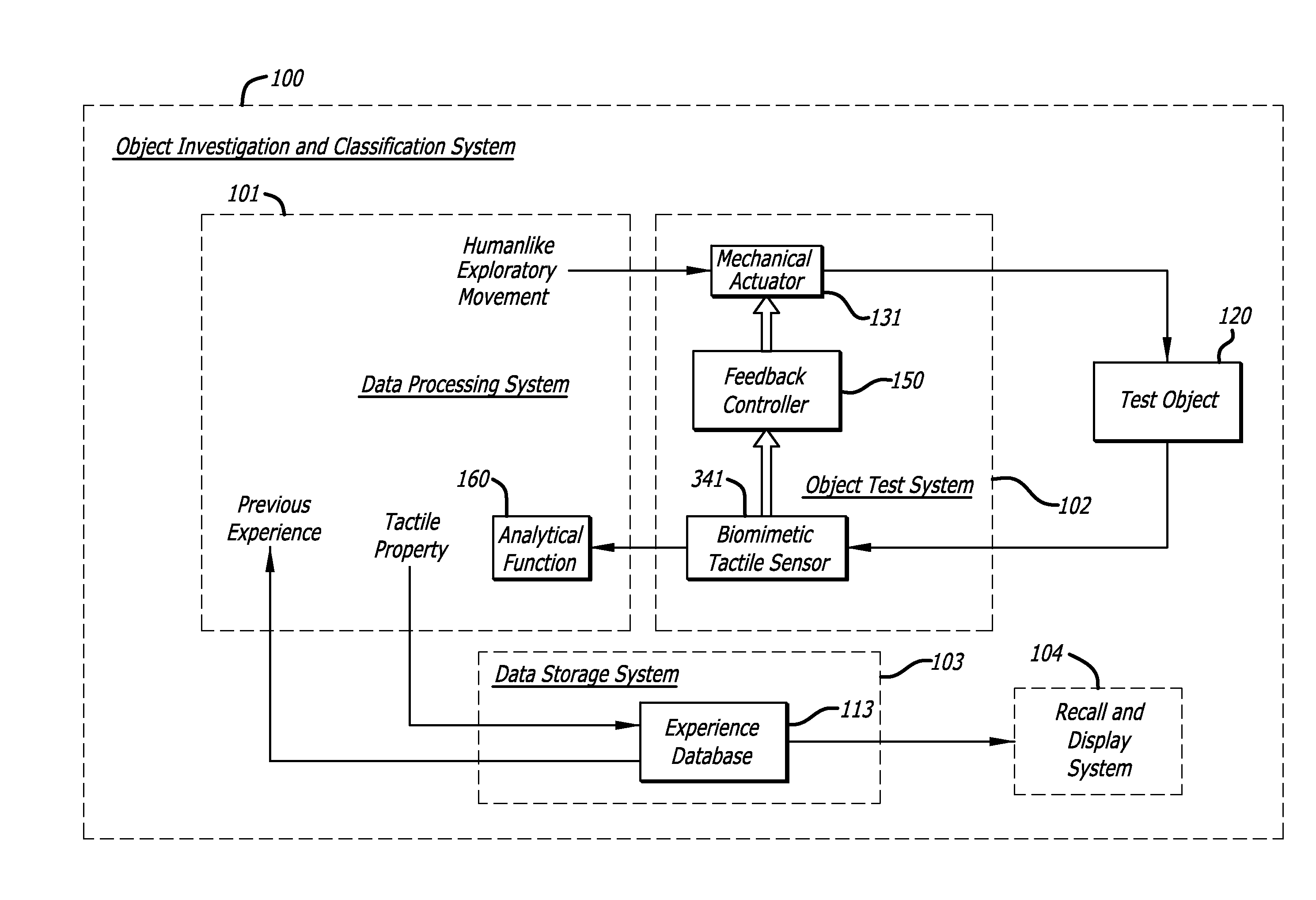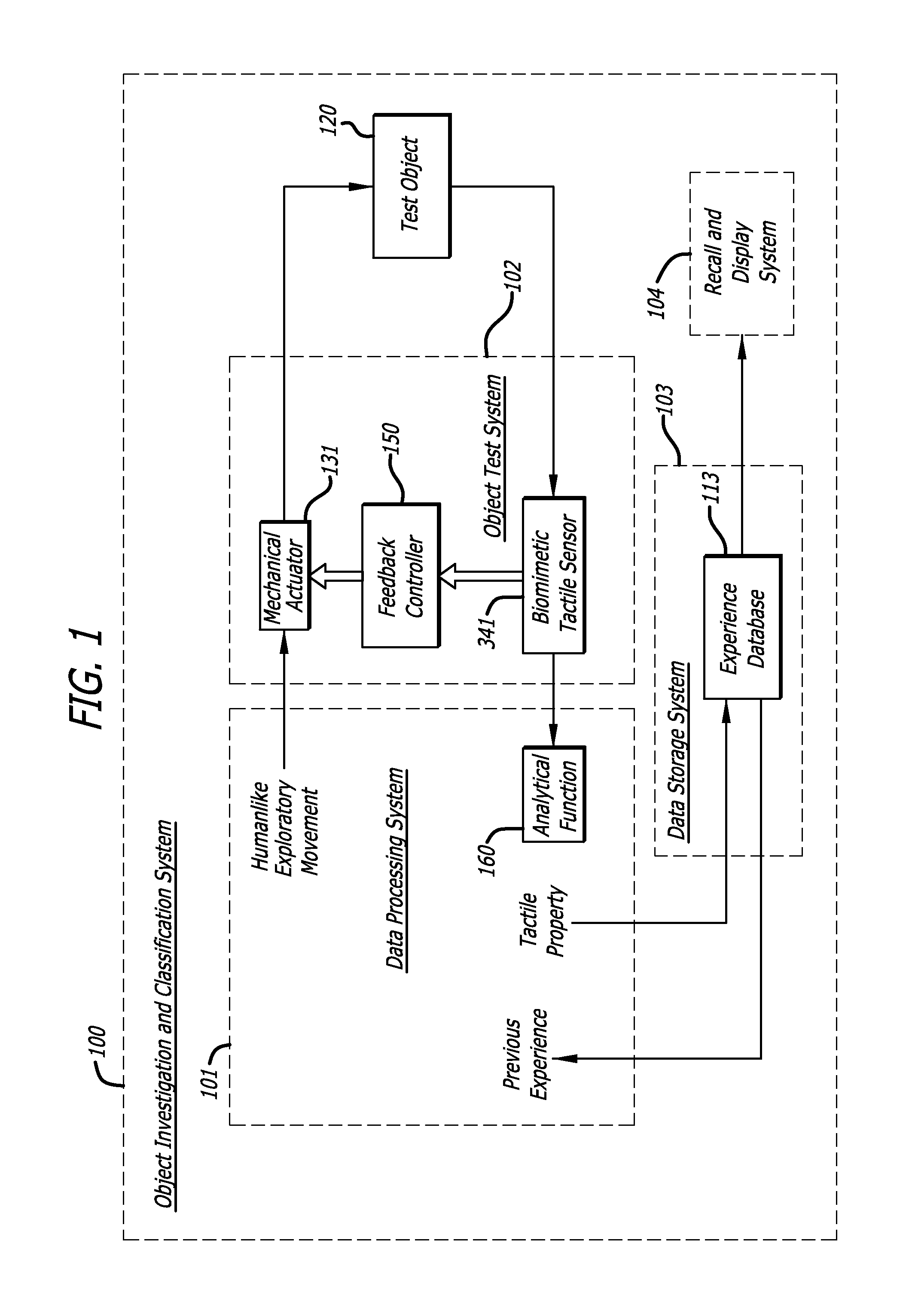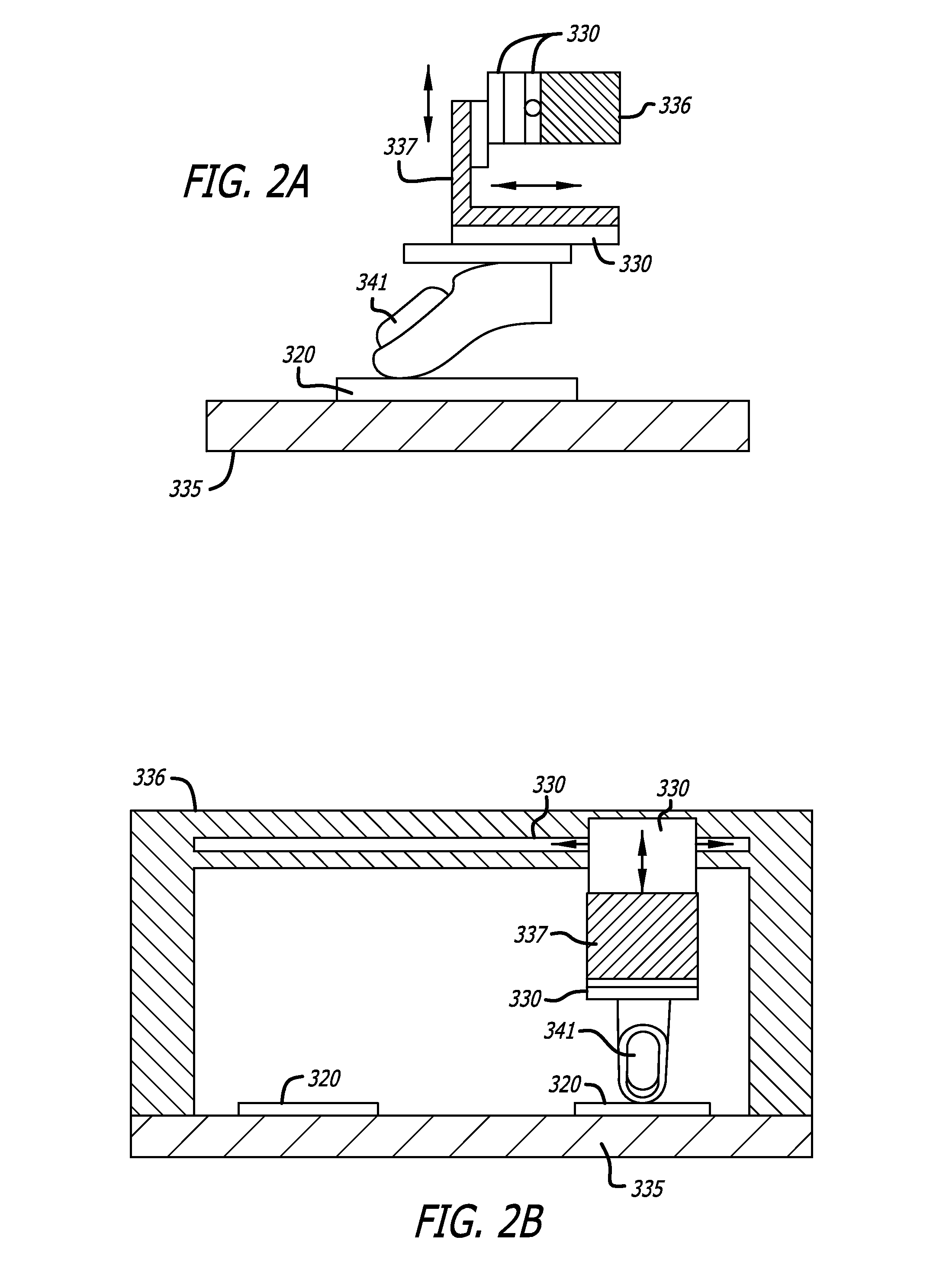Method and applications for measurement of object tactile properties based on how they likely feel to humans
a technology of object tactile properties and human experience, applied in the direction of mechanical roughness/irregularity measurement, measurement devices, instruments, etc., can solve the problems of subjectivity and lack of repeatability, no suitable standard may exist for quantifying how surfaces feel, and limited by skill and ability
- Summary
- Abstract
- Description
- Claims
- Application Information
AI Technical Summary
Benefits of technology
Problems solved by technology
Method used
Image
Examples
Embodiment Construction
[0060]Illustrative embodiments are now described. Other embodiments may be used in addition or instead. Details that may be apparent or unnecessary may be omitted to save space or for a more effective presentation. Some embodiments may be practiced with additional components or steps and / or without all of the components or steps that are described.
[0061]The BioTac® (SynTouch LLC, Los Angeles, Calif.) is a biomimetic tactile sensor that has physical form and mechanical properties similar to a human fingertip, including elastomeric skin with fingerprints, rigid bonelike core, and incompressible fluid between them, and that further incorporates transducers of skin deformation and vibration and thermal flux resulting from contact with materials and surfaces to be characterized (U.S. Pat. No. 7,658,110, No. 7,878,075, No. 8,181,540 and No. 8,272,278).
[0062]Conventional actuators and motion control hardware can be used to build specialized robots that perform controlled exploratory moveme...
PUM
 Login to View More
Login to View More Abstract
Description
Claims
Application Information
 Login to View More
Login to View More - R&D
- Intellectual Property
- Life Sciences
- Materials
- Tech Scout
- Unparalleled Data Quality
- Higher Quality Content
- 60% Fewer Hallucinations
Browse by: Latest US Patents, China's latest patents, Technical Efficacy Thesaurus, Application Domain, Technology Topic, Popular Technical Reports.
© 2025 PatSnap. All rights reserved.Legal|Privacy policy|Modern Slavery Act Transparency Statement|Sitemap|About US| Contact US: help@patsnap.com



